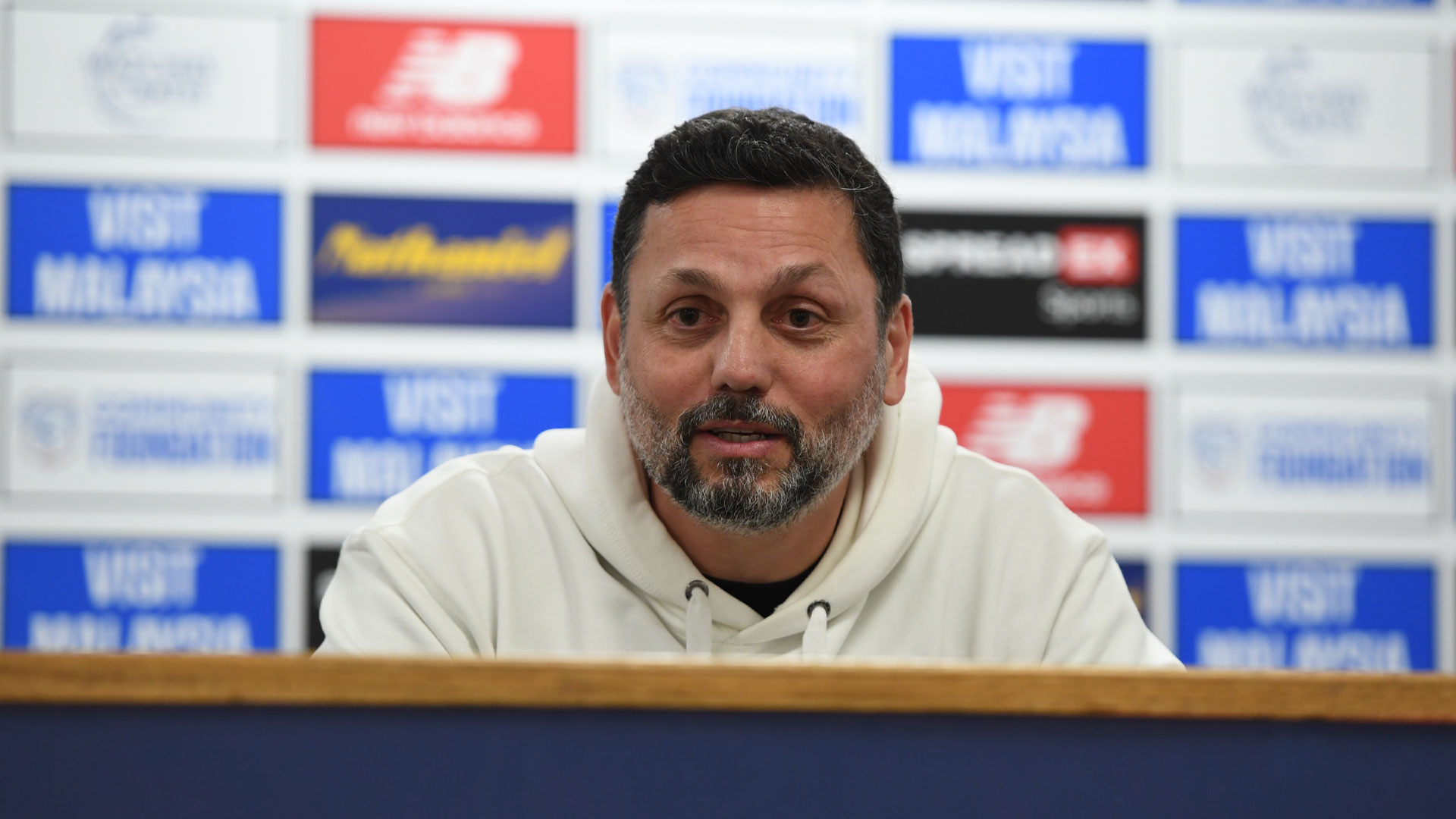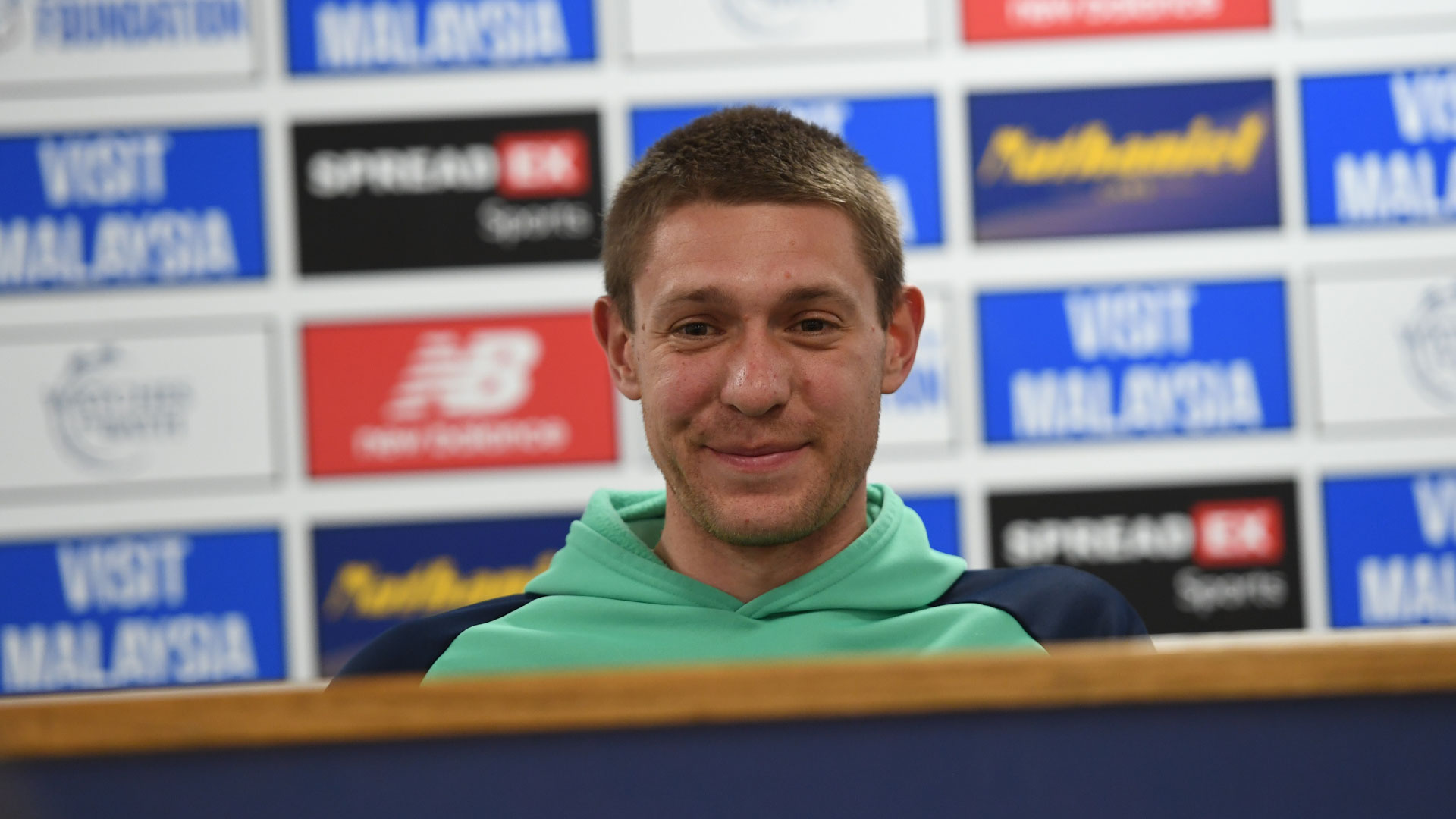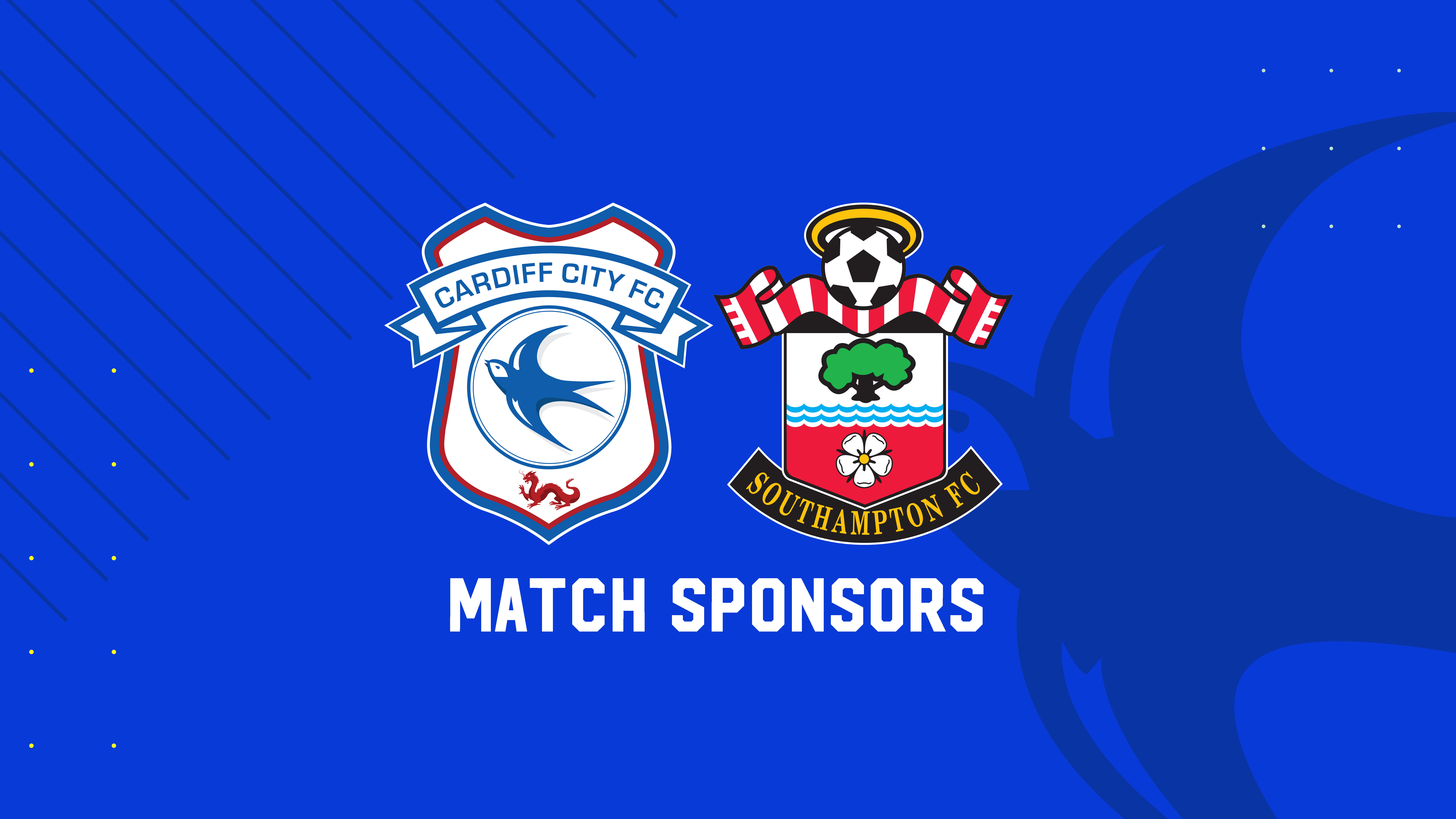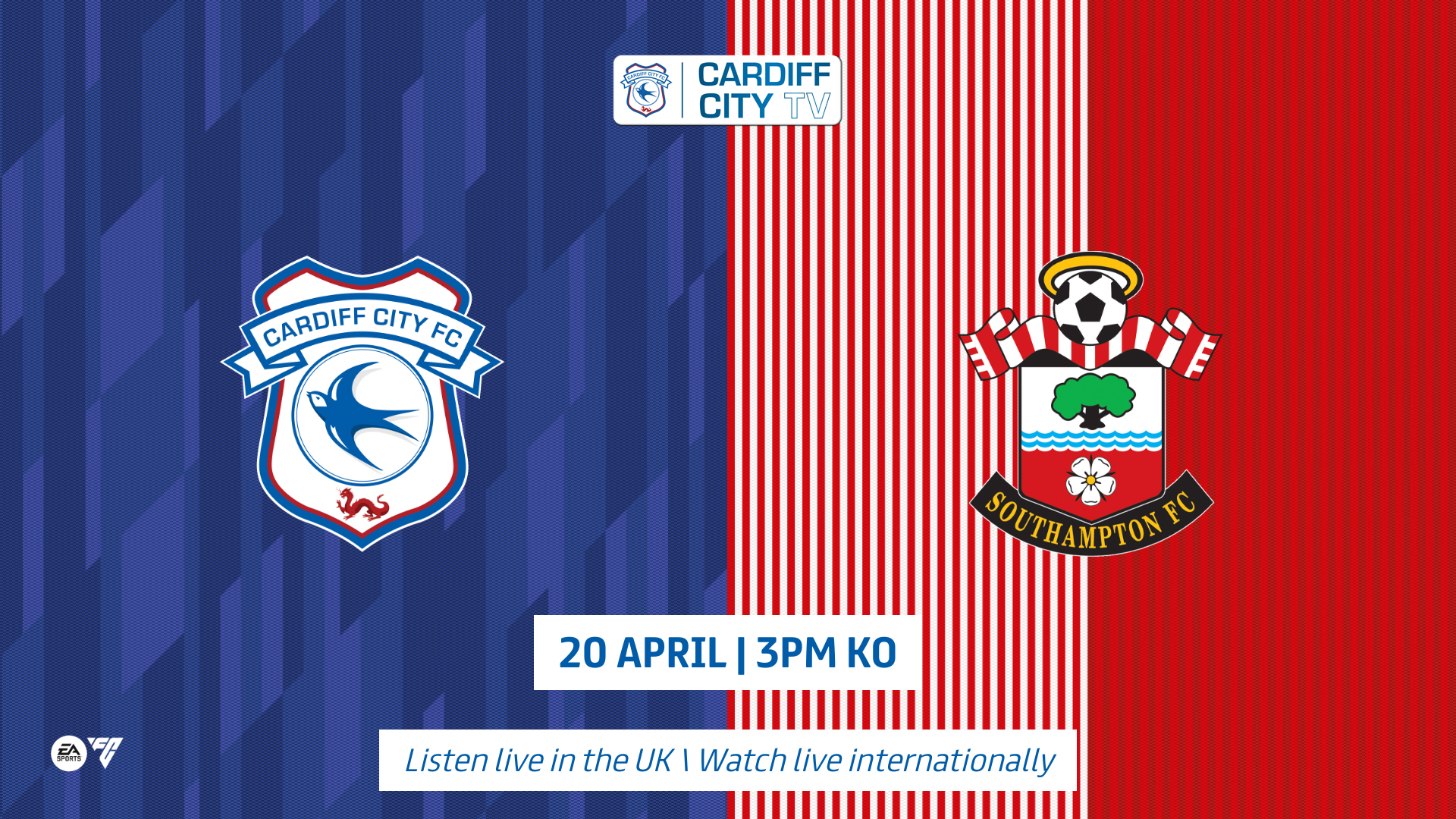1974-1989 FRIDAY FAME & 80s PAIN
History
21st March
Tough times ahead as Madrid memory fades
Chairman David Goldstone brought in the experienced former Leicester City and Manchester United manager, Frank O'Farrell to replace Jimmy Scoular. The new man then went to Tottenham Hotspur for Jimmy Andrews, who agreed to become Cardiff City's first team coach.
But O'Farrell only stayed a hundred and fifty-eight days before accepting a lucrative appointment in the Middle East. Andrews took over the top job, but City finished the 1973-74 season needing a point from their final game against Crystal Palace. An equaliser by Tony Villars left the Bluebirds safe - and consigned Palace to Division Three. The inevitable demotion was only delayed for a year though. Partly through scoring only thirty-six league goals, Cardiff City were relegated after ending the season in twenty-first position.
A sign of the sad times both on and off the pitch was the transfer of Leighton Phillips to Aston Villa. City were in the Cup Winners' Cup once again and due to meet Hungarian side, Ferencváros. Terms were agreed with Villa, and Phillips, who had joined City as a fifteen-year-old, was withdrawn from the party flying to Hungary for the first leg. Supporters were understandably upset and only 4,228 were at Ninian Park for the return leg which the Hungarians won 4-0.
Andrews signed the Spurs and former Welsh international skipper Mike England on a free transfer and Doug Livermore came to the club from Norwich City for an £18,000 fee. In October 1975, Australian World Cup striker Adrian Alston arrived, via Luton Town, and these new recruits were influential in taking City into a promotion position.
A crowd of 35,549 packed into Ninian Park to see champions-elect Hereford United beaten 2-0 by the Bluebirds thanks to goals from Livermore and Alan Campbell. The win meant promotion back to Division Two at the first attempt, coupled soon after by another Welsh Cup Final win - but elation was tempered with the news that England had left the club having not been given the coaching post he had reportedly been promised.
Celebrating another Welsh Cup win, 19 May 1976
Kenton Utilities bought out Goldstone, but there was very little money available for Andrews and two unproductive seasons followed. When Alston left to go and play in the USA, Andrews was given permission to sign Robin Friday from Reading.
After scoring two goals on his debut against Fulham in January 1977, Friday's form deserted him and he went missing on a number of occasions. After just twenty league appearances his contract was cancelled, though he remains to this day one of the most iconic figures of the era. A tragic figure, Robin would pass away in 1990 at the age of just thirty-eight.
completes the signing of Robin FridayJimmy Andrews
In September 1977, City set an all-time low for an attendance at a home Cup Winners' Cup match when only 3,631 turned up to watch FK Austria Memphis draw 0-0 in a first round tie. The new chairman, Newcastle-based Bob Grogan, felt that a change at the top was necessary and in November 1978 he dismissed Andrews and installed Richie Morgan as caretaker/manager. The thirty-four-year-old had been at Ninian Park all his career and was on the Club's commercial staff prior to his appointment.
The players responded so well to the new regime that City finished in ninth place - their highest position for seven seasons. Average attendances had plummeted to 6,500 and in order to increase the use of the facilities and raise further income, the board allowed Cardiff Blue Dragons Rugby League to use Ninian Park. Grogan had by now appointed Ron Jones as general manager and it was his job to run the Club with particular attention to the financial side of the business.
Richie Morgan(L-R) Bob Grogan, Ron Jones and
To add to their woes, Cardiff City were not re-elected to the Football Combination and they withdrew their third team from the Welsh League, effectively losing all fixtures for reserves or youth players. Crowds dipped below 4,000 and in November 1981, Morgan was relieved of his duties as manager and the former West Bromwich Albion and Wales full back Graham Williams was appointed. Williams would later become Bobby Gould's assistant with the Welsh international side.
After a total of only eleven league matches, nine of which were defeats, both Williams and Morgan were dismissed. Len Ashurst took over in March 1982, but he was unable to stop the rot and City went back to Division Three at the end of that season after failing to win their final match against champions Luton Town.
During the summer, Ashurst recruited Jimmy Goodfellow (his former assistant at Newport County), as trainer-coach. In came a number of free transfer players too, including Roger Gibbins from Cambridge United, Jeff Hemmerman from Portsmouth, and Paul Bodin from Newport County. It was in September 1982 that City's 'record' transfer deal took place. We signed Godfrey Ingram from San Jose Earthquakes for a reputed £200,000, but as he returned to that club for the same money only nine weeks later. It has often been suggested that no money ever changed hands.
City's small squad were tested to the limit, but with Dave Bennett outstanding on the wing and Hemmerman banging in the goals, they kept in the promotion hunt. Young 'keeper Andy Dibble suffered a serious injury against Bradford City leading to no less than five custodians being used throughout the season. The Bluebirds struck a bad patch winning only twice in ten games with one of those matches at Somerton Park against a buoyant Newport County. John Aldridge struck the only goal of the game to send County to the top of Division Three and leave City hanging on to fourth spot.
In May, however, 11,480 fans were at Ninian Park to watch Cardiff beat Orient 2-0 with goals from John Lewis and Bennett to send City up as runners-up to Portsmouth. The Bluebirds had lost only one match at home all season yet could still only attract an average crowd of 7,500 which was not enough to maintain the momentum. Ashurst left Cardiff for Sunderland in March, 1984 and Ron Jones appointed Jimmy Goodfellow and Jimmy Mullen in a dual role. With the Club deep in debt and with no money to bring in fresh players, the signs were ominous.
On a brighter note, long-serving Phil Dwyer passed Tom Farquharson's league appearance record of four-hundred and forty-five matches. He also earned ten Welsh caps during his fourteen-year stay at Cardiff City.
Phil Dwyer
There was plenty of transfer activity at Ninian Park at this time but it was mostly one way, as Dibble, Gary Bennett and leading scorer Gordon Owen all departed. Coming in to the Club was Mike Ford (who made his debut at Leeds in December 1984) and former England star Gerry Francis who played in seven of the early matches before moving on to Portsmouth.
The Bluebirds equalled their worst ever start to a season with eight defeats from their first nine games. Goodfellow didn't even last until the end of September before being dismissed in favour of former City and Derby County inside forward, Alan Durban. Durban could do nothing to stop the downward spiral though, and relegation to Division Three was followed by a drop into the basement in 1985-86 with crowds now down to an average of just 3,000.
The Club was put up for sale by Kenton Utilities and they released control to Tony Clemo. Durban was sacked in May 1986, and later that same month Frank Burrows agreed to set about changing the fortunes of Cardiff City. He brought in Alan Curtis from Southampton and Graham Moseley from Brighton & Hove Albion on free transfers; he also convinced Jimmy Goodfellow to come back to the Club as physiotherapist.
Tony Clemo(right) appoints Frank Burrows, 21 May 1986
But City remained inconsistent, failing to win a home game for four months with Burrows switching his small squad continually. Chris Pike came in on loan from Fulham and Kevin Bartlett was signed from Fareham Town. There was also a debut at full back for sixteen-year-old Jason Perry against Exeter City in March, but only 1,510 fans watched the final home game of the season when Hartlepool United were beaten 4-0 leaving Cardiff finish thirteenth place in Division Four.
Jimmy Gilligan came to the club from Lincoln City in time for the 1987-88 season. Another newcomer was Phil Bater, but he became the first City player to be sent off on his debut when dismissed at Wrexham. Moseley sustained a broken arm against Peterborough United and after regaining fitness was involved in a car accident which was to lead to his retirement. Several 'keepers were brought in on loan to cover his absence including George Wood from Crystal Palace.
Cardiff ended the season in style with five straight victories and promotion was gained in front of 10,125 ecstatic fans as the Bluebirds beat Crewe Alexandra 2-0. They made it a double celebration by defeating Wrexham by the same scoreline to win the Welsh Cup and earn a return to European competition after an absence of eleven years.
But Burrows realised the arduous task awaiting him in Division Three when Oxford United offered £150,000 for utility player, Mike Ford. The sum was readily accepted, but the manager was told there would be no money to strengthen the side; he was, however, able to take veteran 'keeper Wood on a permanent basis.
The Gilligan and Bartlett partnership was soon blossoming, but in February 1989 the club sold Bartlett to West Bromwich Albion for £125,000. City finished in sixteenth position, only managing to score fourteen goals away from home during the entire season.The Welsh Cup win brought a Cup Winners' Cup draw against Derry City. City drew 0-0 in Ireland but won comfortably in the second leg with Gilligan grabbing a hat-trick. Danish side Aarhus were the second round opponents and they won 2-1 in Cardiff and 4-0 in the second leg.
The eighties has brought about little more than fleeting joy at Ninian Park. Would the final decade of the Millennium prove any better?
CLICK HERE FOR THE NEXT CHAPTER!
But O'Farrell only stayed a hundred and fifty-eight days before accepting a lucrative appointment in the Middle East. Andrews took over the top job, but City finished the 1973-74 season needing a point from their final game against Crystal Palace. An equaliser by Tony Villars left the Bluebirds safe - and consigned Palace to Division Three. The inevitable demotion was only delayed for a year though. Partly through scoring only thirty-six league goals, Cardiff City were relegated after ending the season in twenty-first position.
A sign of the sad times both on and off the pitch was the transfer of Leighton Phillips to Aston Villa. City were in the Cup Winners' Cup once again and due to meet Hungarian side, Ferencváros. Terms were agreed with Villa, and Phillips, who had joined City as a fifteen-year-old, was withdrawn from the party flying to Hungary for the first leg. Supporters were understandably upset and only 4,228 were at Ninian Park for the return leg which the Hungarians won 4-0.
Andrews signed the Spurs and former Welsh international skipper Mike England on a free transfer and Doug Livermore came to the club from Norwich City for an £18,000 fee. In October 1975, Australian World Cup striker Adrian Alston arrived, via Luton Town, and these new recruits were influential in taking City into a promotion position.
A crowd of 35,549 packed into Ninian Park to see champions-elect Hereford United beaten 2-0 by the Bluebirds thanks to goals from Livermore and Alan Campbell. The win meant promotion back to Division Two at the first attempt, coupled soon after by another Welsh Cup Final win - but elation was tempered with the news that England had left the club having not been given the coaching post he had reportedly been promised.
Celebrating another Welsh Cup win, 19 May 1976
Kenton Utilities bought out Goldstone, but there was very little money available for Andrews and two unproductive seasons followed. When Alston left to go and play in the USA, Andrews was given permission to sign Robin Friday from Reading.
After scoring two goals on his debut against Fulham in January 1977, Friday's form deserted him and he went missing on a number of occasions. After just twenty league appearances his contract was cancelled, though he remains to this day one of the most iconic figures of the era. A tragic figure, Robin would pass away in 1990 at the age of just thirty-eight.
completes the signing of Robin FridayJimmy Andrews
In September 1977, City set an all-time low for an attendance at a home Cup Winners' Cup match when only 3,631 turned up to watch FK Austria Memphis draw 0-0 in a first round tie. The new chairman, Newcastle-based Bob Grogan, felt that a change at the top was necessary and in November 1978 he dismissed Andrews and installed Richie Morgan as caretaker/manager. The thirty-four-year-old had been at Ninian Park all his career and was on the Club's commercial staff prior to his appointment.
The players responded so well to the new regime that City finished in ninth place - their highest position for seven seasons. Average attendances had plummeted to 6,500 and in order to increase the use of the facilities and raise further income, the board allowed Cardiff Blue Dragons Rugby League to use Ninian Park. Grogan had by now appointed Ron Jones as general manager and it was his job to run the Club with particular attention to the financial side of the business.
Richie Morgan(L-R) Bob Grogan, Ron Jones and
To add to their woes, Cardiff City were not re-elected to the Football Combination and they withdrew their third team from the Welsh League, effectively losing all fixtures for reserves or youth players. Crowds dipped below 4,000 and in November 1981, Morgan was relieved of his duties as manager and the former West Bromwich Albion and Wales full back Graham Williams was appointed. Williams would later become Bobby Gould's assistant with the Welsh international side.
After a total of only eleven league matches, nine of which were defeats, both Williams and Morgan were dismissed. Len Ashurst took over in March 1982, but he was unable to stop the rot and City went back to Division Three at the end of that season after failing to win their final match against champions Luton Town.
During the summer, Ashurst recruited Jimmy Goodfellow (his former assistant at Newport County), as trainer-coach. In came a number of free transfer players too, including Roger Gibbins from Cambridge United, Jeff Hemmerman from Portsmouth, and Paul Bodin from Newport County. It was in September 1982 that City's 'record' transfer deal took place. We signed Godfrey Ingram from San Jose Earthquakes for a reputed £200,000, but as he returned to that club for the same money only nine weeks later. It has often been suggested that no money ever changed hands.
City's small squad were tested to the limit, but with Dave Bennett outstanding on the wing and Hemmerman banging in the goals, they kept in the promotion hunt. Young 'keeper Andy Dibble suffered a serious injury against Bradford City leading to no less than five custodians being used throughout the season. The Bluebirds struck a bad patch winning only twice in ten games with one of those matches at Somerton Park against a buoyant Newport County. John Aldridge struck the only goal of the game to send County to the top of Division Three and leave City hanging on to fourth spot.
In May, however, 11,480 fans were at Ninian Park to watch Cardiff beat Orient 2-0 with goals from John Lewis and Bennett to send City up as runners-up to Portsmouth. The Bluebirds had lost only one match at home all season yet could still only attract an average crowd of 7,500 which was not enough to maintain the momentum. Ashurst left Cardiff for Sunderland in March, 1984 and Ron Jones appointed Jimmy Goodfellow and Jimmy Mullen in a dual role. With the Club deep in debt and with no money to bring in fresh players, the signs were ominous.
On a brighter note, long-serving Phil Dwyer passed Tom Farquharson's league appearance record of four-hundred and forty-five matches. He also earned ten Welsh caps during his fourteen-year stay at Cardiff City.
Phil Dwyer
There was plenty of transfer activity at Ninian Park at this time but it was mostly one way, as Dibble, Gary Bennett and leading scorer Gordon Owen all departed. Coming in to the Club was Mike Ford (who made his debut at Leeds in December 1984) and former England star Gerry Francis who played in seven of the early matches before moving on to Portsmouth.
The Bluebirds equalled their worst ever start to a season with eight defeats from their first nine games. Goodfellow didn't even last until the end of September before being dismissed in favour of former City and Derby County inside forward, Alan Durban. Durban could do nothing to stop the downward spiral though, and relegation to Division Three was followed by a drop into the basement in 1985-86 with crowds now down to an average of just 3,000.
The Club was put up for sale by Kenton Utilities and they released control to Tony Clemo. Durban was sacked in May 1986, and later that same month Frank Burrows agreed to set about changing the fortunes of Cardiff City. He brought in Alan Curtis from Southampton and Graham Moseley from Brighton & Hove Albion on free transfers; he also convinced Jimmy Goodfellow to come back to the Club as physiotherapist.
Tony Clemo(right) appoints Frank Burrows, 21 May 1986
But City remained inconsistent, failing to win a home game for four months with Burrows switching his small squad continually. Chris Pike came in on loan from Fulham and Kevin Bartlett was signed from Fareham Town. There was also a debut at full back for sixteen-year-old Jason Perry against Exeter City in March, but only 1,510 fans watched the final home game of the season when Hartlepool United were beaten 4-0 leaving Cardiff finish thirteenth place in Division Four.
Jimmy Gilligan came to the club from Lincoln City in time for the 1987-88 season. Another newcomer was Phil Bater, but he became the first City player to be sent off on his debut when dismissed at Wrexham. Moseley sustained a broken arm against Peterborough United and after regaining fitness was involved in a car accident which was to lead to his retirement. Several 'keepers were brought in on loan to cover his absence including George Wood from Crystal Palace.
Cardiff ended the season in style with five straight victories and promotion was gained in front of 10,125 ecstatic fans as the Bluebirds beat Crewe Alexandra 2-0. They made it a double celebration by defeating Wrexham by the same scoreline to win the Welsh Cup and earn a return to European competition after an absence of eleven years.
But Burrows realised the arduous task awaiting him in Division Three when Oxford United offered £150,000 for utility player, Mike Ford. The sum was readily accepted, but the manager was told there would be no money to strengthen the side; he was, however, able to take veteran 'keeper Wood on a permanent basis.
The Gilligan and Bartlett partnership was soon blossoming, but in February 1989 the club sold Bartlett to West Bromwich Albion for £125,000. City finished in sixteenth position, only managing to score fourteen goals away from home during the entire season.The Welsh Cup win brought a Cup Winners' Cup draw against Derry City. City drew 0-0 in Ireland but won comfortably in the second leg with Gilligan grabbing a hat-trick. Danish side Aarhus were the second round opponents and they won 2-1 in Cardiff and 4-0 in the second leg.
The eighties has brought about little more than fleeting joy at Ninian Park. Would the final decade of the Millennium prove any better?
CLICK HERE FOR THE NEXT CHAPTER!



